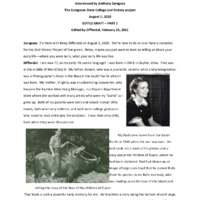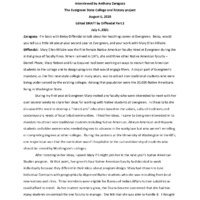Betsy Diffendal Oral History Interview
Item
- Identifier
- Title
- Date
- Creator
- Contributor
-
DiffendalBetsy
-
Betsy Diffendal Oral History Interview
-
August 5, 2020
-
Betsy Diffendal
-
Anthony Zaragoza
Position: 359 (12 views)

